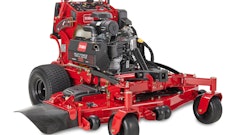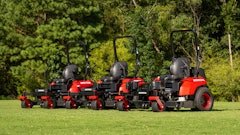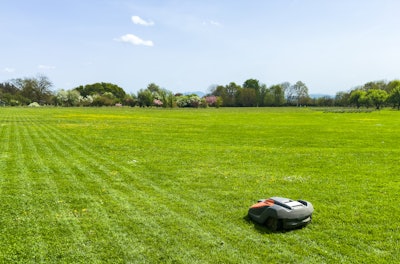
Commercial autonomous mowers are becoming more popular with landscape professionals, and there are key reasons behind their increasingly widespread use.
Like any other new technological trend, robotic mowers prompt questions from potential adopters, and some specific, identifiable trends have emerged over the last few years.
Labor Situation
More professional landscapers are switching to robotic mowing due to staffing challenges. COVID-19 in 2020 further heightened awareness of the green industry’s labor shortage, accelerating the adoption of commercial robotic mowers.
There is a misnomer that robotic mowing is taking away jobs from landscapers. The green industry has seen a sustained, long-term pattern of labor shortages that continue to worsen, making recruiting and retaining quality labor a major challenge. Robotic mowing can help commercial landscape professionals to optimize their existing labor force and offset labor gaps.
Long Term Cost Savings
While a historical source of income for commercial landscape professionals, mowing is typically not a big profit pool for landscape professionals and can be costly. Robotic mowers can allow a company to reassign workers from mowing to other more profitable work, like fertilization, application, or turf renovation.
Robot mowers can help optimize an LCO’s workforce. Robotics can be casually monitored, unlike manual mowing, which requires a dedicated operator.
Robotic mowers can also greatly reduce fuel costs. A commercial zero-turn mower can burn one to two gallons of fuel per hour, whereas recharging has a significantly lower “refueling” cost. In some cases, the total cost of kilowatt hours to recharge a robotic mower could be less than $100 for an entire growing season. Gasoline costing $3.50 a gallon can easily add up to $100 or more per week per mower.
Lastly, robotic mowers can also offer significant savings in both preventative maintenance and repairs. Battery-operated robotic mowers do not need oil changes or filters, and blades for robotic mowers often cost much less than for traditional gas-powered mowers. Robot mowers have fewer wear points compared to ride-on gas mowers, and do not have common failure items such as belts, bearings, spindles, and switches.
Improve Output and Productivity with Robotic Mowing
Autonomous mowers can give commercial lawn care operators a competitive edge.
Because robotic mowers require only casual monitoring, they can operate without active oversight. They can mow at night, outside of normal working hours and can run in adverse weather conditions, allowing for more output.
Robotic mowers also often have built-in scheduling capabilities, and in some cases weather sensors to allow landscape professionals to customize mowing schedules. As needed during adverse weather, changes to the mowing schedule can be managed by the mower itself or adjusted by someone offsite.
Healthy Grass, Happy Customers
Robotic mowers are purpose-built for frequent maintenance cutting. More frequent mowing keeps the turf at a specified height with only the tips of the stalks being snipped, instead of being cut farther down the blades of grass. More frequent mowing reduces stress on the plant, and speeds recovery, improving the overall health of the turf for a better-looking result.
Battery-operated robotic mowers are also very quiet, often in the 50 dB to 60 dB range. Other sounds in that range include normal human conversations, the hum of a refrigerator, or moderate rainfall. This quiet operation means robot mowers can do work without annoying customers or neighbors. Some locales have adopted noise ordinances that almost make battery-operated robot mowers a necessity.
Upfront Costs, How to Manage
While battery-operated robot mowers offer advantages over traditional gas-powered mowers, they do tend to cost more up front, which can seem challenging to some businesses.
SiteOne recently ran some cost-per-acre models comparing a high-end commercial zero-turn mower with a robotic mower capable of maintaining six to nine acres. Both types of mowers showed similar first-year costs of $52 to $55 per acre. But in year two, gas mowers improved the cost per acre down to $42, but the robotic mowers cost was down to less than $10 per acre.
Financing the purchase of battery-operated robotic mowers helps reduce upfront costs and helps operators get into the significant year-two savings. This offers a quicker path to cost-per-acre savings by not taking on the full upfront cost in year one.
There are financing programs available to help businesses convert from gas mowers to robotic mowers. For example, SiteOne has programs with many options tailored to meet different needs and preferences. SiteOne also offers full support for robotic mowers, with parts, service and warranty.
Robotic Mowers Are the Future
Robotic mower technology has greatly improved over the last few years and continues to get better all the time. Because of their efficiency, reliability and quiet operation, more professional landscapers are turning to robotic mowers to supplement their labor and to increase their business opportunities. While robotic mowers currently cost more upfront than traditional gas-powered mowers, their advantages become very apparent as quickly as the second year after converting to them. There are many programs and resources available to help support green industry professionals who wish to make the switch over to battery-operated robotic mowers.


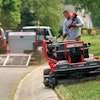
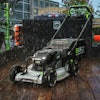
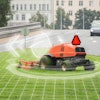
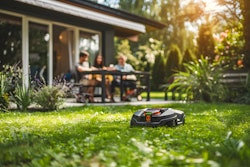

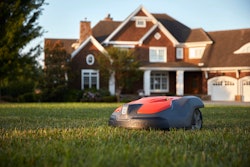



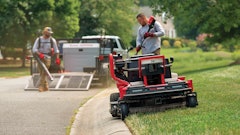
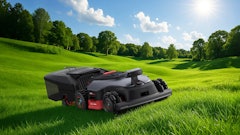
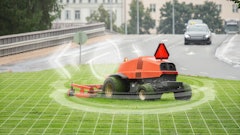
![Gravely Pro Turn Mach One My23 Dsc03139 Edit 1200x800 5b2df79[1]](https://img.greenindustrypros.com/mindful/acbm/workspaces/default/uploads/2025/10/gravely-pro-turn-mach-one-my23-dsc03139-edit-1200x800-5b2df791.BucBnDoN22.jpg?ar=16%3A9&auto=format%2Ccompress&fit=crop&h=135&q=70&w=240)


